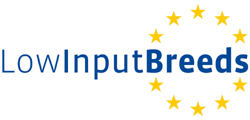Contact
Saskia Bloemhof,
Onderzoeker/ Researcher
Wageningen University and Research Centre![]() saskia.bloemhof@no-spam.wur.nl
saskia.bloemhof@no-spam.wur.nl
Selecting for heat tolerance in sows for a better farrowing rate
New publication by Saskia Bloemhof et al of TOPIGS Research Center IPG
In swine herd recording schemes, farrowing rate is usually defined as the percentage of first inseminations resulting in a litter of piglets being born. Most breeding programs until now have not attempted its direct improvement, believing that it is difficult to influence genetically.
Recent research conducted at TOPIGS Research Center IPG, made a strong case for the inclusion of farrowing rate among the selection targets. More specifically, the study pointed to chances of improvement by showing that genetic variation played a role in the farrowing rate. This was shown to relate to abilities of sows tolerating higher temperatures. Although both heat tolerance and farrowing rate are traits with a low heritability, the study found genetic variation still exists. That knowledge could be used in selection schemes to potentially achieve improvements.
This is good news for any sow herd that operates in a warmer climate. In environmental conditions, where sow reproductive performance tends to be limited by heat, more inseminations may be successful. This in turn would lead to fewer disturbances in the piglet production flow.
More information
Contact
Saskia Bloemhof, TOPIGS/IPG
Quote
- Bloemhof, S.; Kause, A.; Knol, E.F.; Van Arendonk, J.A.M. und Misztal, I. (2012) Heat stress effects on farrowing rate in sows: Genetic parameter estimation using within-line and crossbred models. Journal of Animal Science, 90, S. 2109-2119. http://jas.fass.org/content/90/7/2109

Link
- Research.TOPIGS.com: TOPIGS Research Center IPG

- LowInputBreeds.org: Subproject 3: Pig production systems
- OrgPrints.org: Publications from the LowInputBreeds subproject 3 on pigs

 This website was archived on December 19, 2017 and is no longer updated.
This website was archived on December 19, 2017 and is no longer updated.


